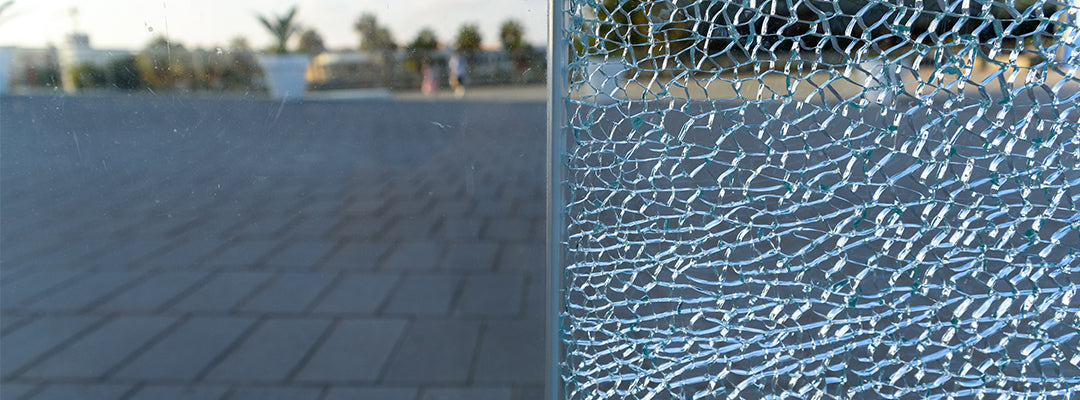Tempered vs. Annealed Glass: Which One Do You Need?
A Tale of Two Glasses
Ever wondered about the difference between the glass in your picture frames and the glass in your car's side windows? While they might look the same, they have very different properties. The key difference lies in how they are made, which affects their strength, safety, and how they break.
This guide will break down the differences between two common types of glass: annealed and tempered. Understanding these distinctions will help you know why the right type of glass is crucial for safety and performance in everything from your home to your car.
What is Annealed Glass?

Think of annealed glass as the most basic type of glass. It's the starting point for many other glass products.
After being formed, the glass is cooled slowly. This slow cooling process relieves internal stress, making the glass stable and easy to cut. You'll often hear it called "standard" or "regular" glass.
Key Features of Annealed Glass:
- Basic Strength: It has the lowest strength compared to other glass types.
- Breakage Pattern: When it breaks, it shatters into large, sharp, and dangerous shards.
- Easy to Work With: It can be easily cut and shaped after it's made.
- Low Heat Resistance: It can crack if there's a significant temperature difference across its surface (more than about 50°C).
Because of its hazardous breakage pattern, annealed glass is best for low-risk applications where human impact is unlikely.
What is Tempered Glass?
Tempered glass is a type of safety glass. It starts as annealed glass but goes through an extra step: a special heating and rapid cooling process called "quenching."
This treatment creates a high-compression "armor" on the glass surfaces, with a tense core. This internal stress is what gives tempered glass its superior qualities. It's also known as "toughened glass."
Key Features of Tempered Glass:
- Superior Strength: It is about four to five times stronger than annealed glass.
- Safe Breakage: When it breaks, it crumbles into small, blunt, pebble-like pieces. This greatly reduces the risk of serious injury.
- Cannot Be Altered: All cutting and drilling must be done before the tempering process. Any attempt to cut it afterward will cause it to shatter.
- High Heat Resistance: It can withstand temperature differences of up to 250°C, making it perfect for use near heat sources.
Strength and Durability: A Clear Winner
When it comes to withstanding impact, tempered glass is the champion. Its unique manufacturing process makes it far more resilient.
Consider this example for a standard glass panel under a strong wind load:
- Annealed Glass: Has a high probability of breaking.
- Tempered Glass: The probability of breakage is about 20,000 times lower than annealed glass.
While both types of glass have the same stiffness, tempered glass can bend much more before it fractures. This incredible strength is why it’s used in demanding situations.
Safety First: The Breakage Pattern Matters Most

The biggest advantage of tempered glass is how it behaves when it breaks.
- Annealed Glass breaks into large, dagger-like shards that can cause severe injuries.
- Tempered Glass shatters into small, relatively harmless granules. This is its key safety feature.
This "dicing" pattern is why building codes mandate tempered glass in many areas of our homes and public spaces to protect people from harm.
Common Uses for Each Glass Type
The choice between annealed and tempered glass depends entirely on the application.
Typical Uses for Annealed Glass:
- Picture frames
- Mirrors
- Small cabinet doors
- Windows in low-risk areas (e.g., upper floors of a house)
Common Applications for Tempered Glass:
- Safety Glazing: Shower doors, bathtub enclosures, and glass doors.
- Automotive: Side and rear vehicle windows.
- Furniture: Glass tabletops, shelves, and patio furniture.
- Appliances: Oven doors, microwave doors, and fireplace screens.
- Architecture: Balconies, railings, skylights, and large storefronts.
Cost vs. Long-Term Value
Annealed glass is less expensive upfront. However, the higher initial cost of tempered glass often proves to be a wise investment. Its durability means fewer replacements, and its safety features can prevent costly accidents and liability issues.
For applications where strength and safety are critical, the long-term value of tempered glass is undeniable.





Post Comment